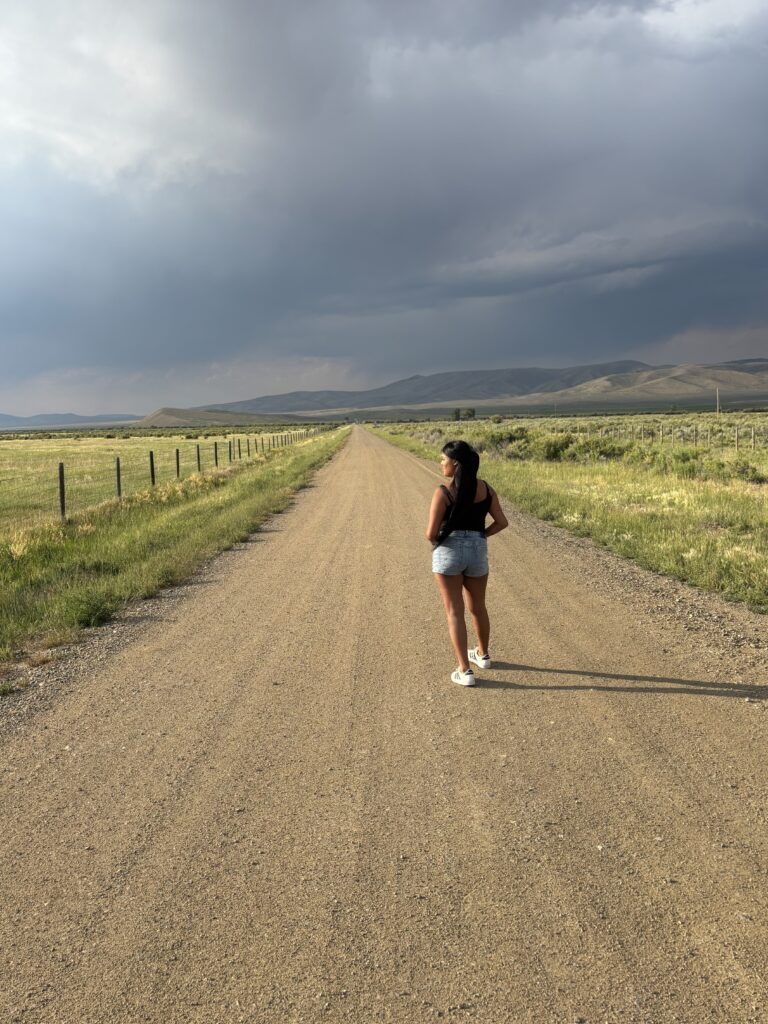Some roads don’t take you back; they carry you forward.
Still, I needed to walk this one more time.
There’s healing in returning, especially when grace walks beside you.
The moment we landed in Montana, something shifted in me. I couldn’t quite name it, but the weight of it settled in fast. It wasn’t just the familiarity of my home state; it was the emotional weight of being back in my hometown — a place I’d avoided for years because of the memories it holds. And to be candid, I think that’s why I stayed away for so long.
Driving past old streets, familiar landmarks, and places tied to childhood memories brought everything rushing back. Some memories were beautiful, filled with laughter. But others carried deep pain—reminders of betrayal and moments that completely broke me. They shaped who I am today.

There have been moments where I’ve compared suffering and the journey of healing—especially in conversations with my siblings about Dillon. For them, the town doesn’t carry the same emotional weight. They’ve shared that they don’t have as many memories tied to the place, and in some ways, that’s been a quiet blessing—less to carry, less to stir up. And for me, those memories are everywhere. They show up on the roads I once traveled, the parks I played in, and in the faces of people I pass who I used to know. It’s in those places where joy and hurt lived side by side, often at the very same time. Like me, some of my siblings can’t bring themselves to return, and I don’t blame them. I’ve come to understand that healing unfolds differently for each of us. We come back—if we come back at all—on our own terms. And that’s perfectly okay.
And something that’s not often understood about survivors of sexual assault is that the pain can still be part of your story. It doesn’t disappear. Even with decades of intense therapy, it still lives within you. The difference is how you respond to it when your feet hit the soil of where it happened. That’s when I realized healing had two parts. Therapy helped me name what happened, to understand how it shaped my responses, my triggers, and the way I saw myself. But it wasn’t until Jesus stepped into those broken places that real restoration began. He didn’t rush me past the pain or ask me to pretend it didn’t happen. He sat with me in it. He reminded me that what happened to me was not my fault. That I wasn’t too much. That I was worth protecting. Worth loving. Therapy gave me tools, but Jesus gave me truth. He gave me permission to grieve what was lost, and at the same time, began restoring what was stolen—piece by piece.
And yes, going back to the place that took so much of my innocence stirred something within me. Because no matter how far you’ve come, returning to the place where it all began will always stir something inside you. And by the time I reached the ranch, I wasn’t just stepping onto familiar ground—I was stepping into layers of emotion with new strength, new perspective, and a deeper sense of peace. This wasn’t just about the grey clouds in the picture. It was the emotional storm of returning to a place I hadn’t set foot in for years.
As I stood on that road as an adult, I saw it through different eyes. I came to understand something I couldn’t fully grasp as a child or teenager: the disconnection in adoption is uniquely painful because our loss was our starting point. I knew what it meant to be separated long before I had the words for it. So when loss reappears, it hits differently—harder to explain, harder to name. Our nervous systems remember what our minds can’t always articulate. Long after the memories fade, our bodies still respond to what once felt unsafe. We fight. We freeze. Not because we’re broken or unhealed, but because grief wired us before we even knew what grief was.
So when I return to familiar places—whether they hold beautiful memories or immense pain—it stirs something deep. People often don’t see or understand how far the roots of that early loss go for me. I’m not just grieving what was lost. I’m grieving what was—even if it was good, complicated, or abusive. Adoption isn’t a single event. It’s the beginning of a lifelong search—for connection, for community. And we’ll fight for those two things, even when it’s unsafe—because sometimes those fleeting moments of feeling like we matter feel worth the cost.
Healing isn’t always a straight line. Often it’s quiet, slow, and sacred. And I know that with Jesus, the journey becomes lighter—a lot lighter. Because truth be told, earthly adoption, beautiful and broken as it may be, is still shaped by human hands. But being adopted by God is entirely different. It’s steady. It’s safe.
So no, coming back wasn’t simple. It wasn’t about closure or reconciliation. Standing on that dirt road, I realized healing had already been happening—quietly, faithfully—long before my feet ever touched the soil of my hometown.
Leave a Reply